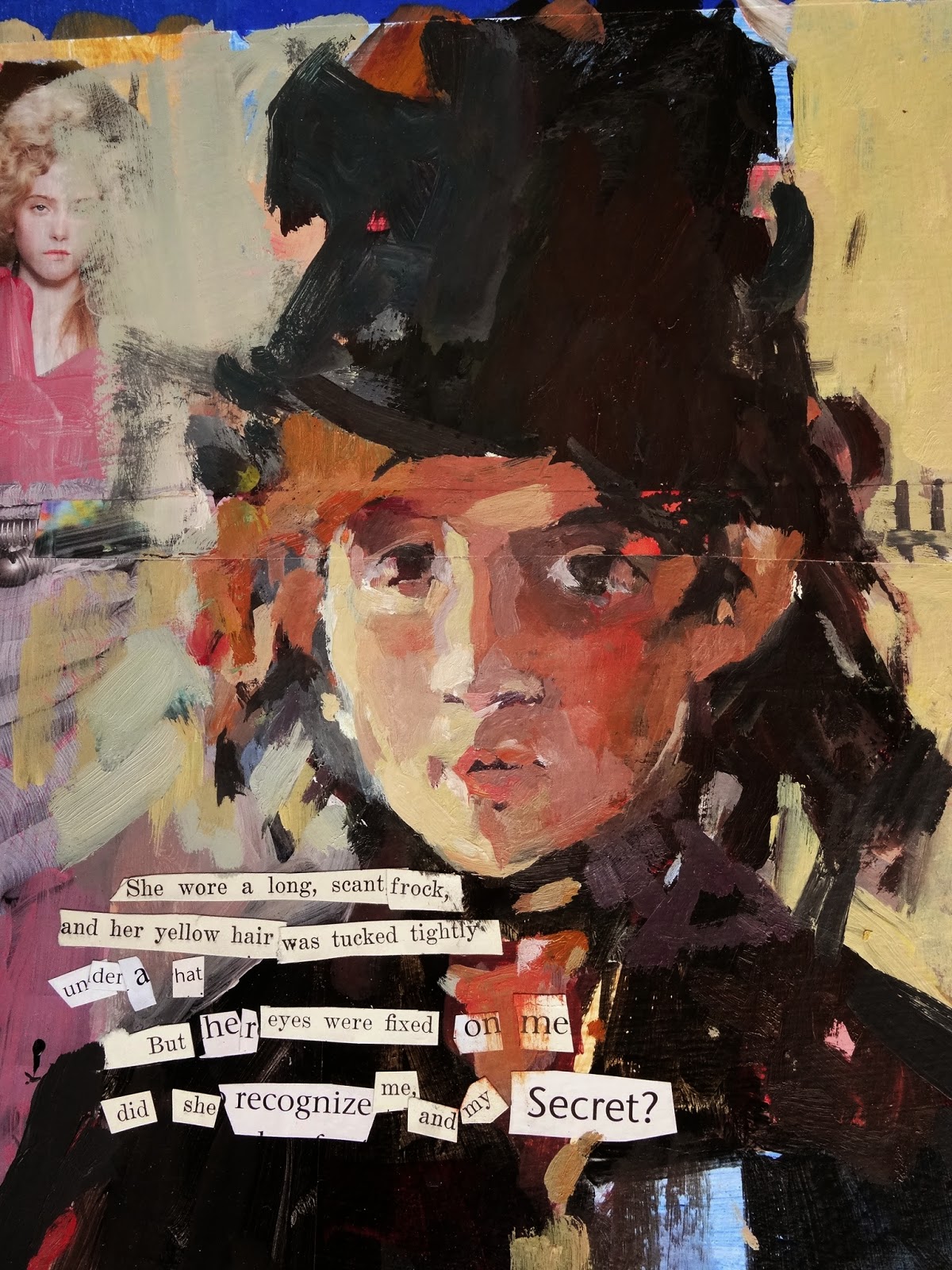Skew the Masters
Manet's Secret
Inspired by:
Edouard Manet, Berthe Morisot with Violets, 1872
Oh. My. Now here’s a
love triangle for you. Berthe Morisot
was the model here and amazing Impressionist painter “She paints like a
savage,” one critic said of her.
Eadourd Manet, the scandalous artist (one of my favorites!)
but only always proper gentleman, painted the beautiful Morisot more often than
any model. Most believe the two were in
love. The married Manet convinces her to
marry his brother and never paints her again.
In my version, a secret scenerio emerges.
She wore a long, scant frock and her yellow hair was tucked tightly
under a hat.
But her eyes were fixed on me.
Did she recognize me and my Secret?”
Louie in Disarray
Inspired by Hyacinthe Rigaud, The Portrait of Louis XIV (1701)
I often look to the Masters to understand how they construct
an artwork. This can only enhance my own
paintings while paying homage to my favorite painters or paintings. Not only a student of the artist, I try to
allow my own expression to come through while staying true, in spirit, to the
original.
This painting of Louis XIV, “The Sun King,” is fantastically
over the top, just like its subject who not only reigned as absolute monarch of
France from the Palace of Versailles, but was the inventor of the high heel. You’re
welcome.
The painting is lush,
regal, patterned and dramatic. Love it!
While painting , a secret scenerio to emerged.
“When he stood up, his wig was greatly disarranged.
“Pardon Me,” He spoke slowly,
“but I danced all night
with Uncommon brilliance.
“I felt I owed it to them.”
“You know,” He laughed, “L’etat,
c’est moi.”
Beyond the Garden Walls: Emerald Orchard

Inspired by: Gustave Klimt The Pear Tree 1903
This “skew” is the
result of a convergence.
Working as
an artist-in-residence at a chemotherapy center, I observed and considered the
marks made by both patients and caretakers. After they completed the work, we
would reflect upon those marks. Themes
of chaos, randomness and accidents recurred. However, amid this apparent
randomness there seemed to emerge a sort of order and harmony.
Around the same time, it seems the
works of Gustave Klimt, whose works are often comprised of small, mosaic-like
shapes kept crossing my path, culminating in a visit to the Harvard Museum of
Art where Klimt’s “The Pear Tree” hangs and pulls the viewer into a magical and
(for me) healing place!









Comments
Post a Comment